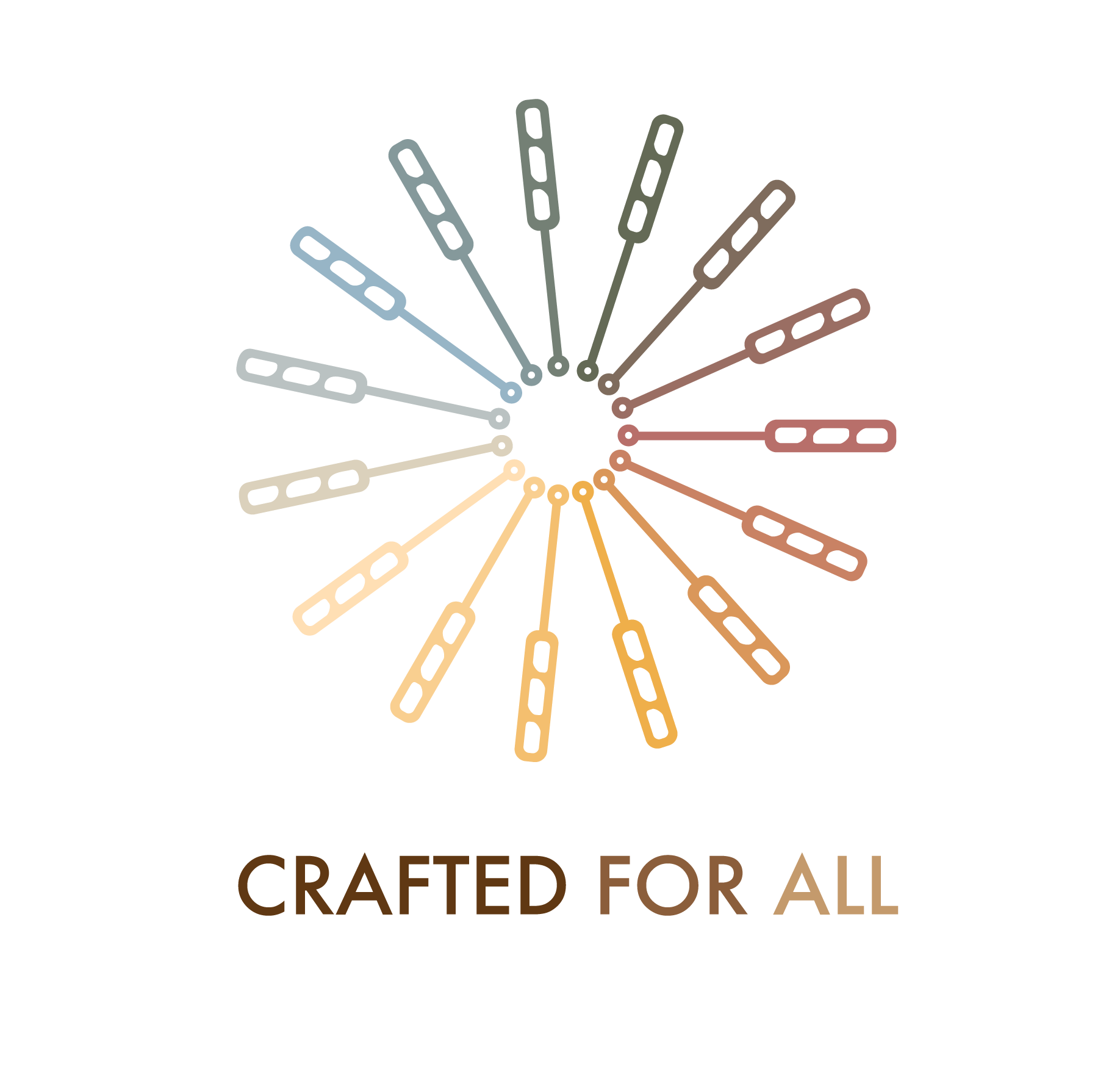Reflections on my first year as the craft beer industry’s first Diversity Ambassador
Actually, it’s only been eight months since I was named the Brewers Association’s first Diversity Ambassador. But, to tell you the truth, there are days when it feels that only a handful of weeks have passed since that announcement and others when it feels that I have been in this role far longer. Today, I am in a reflective mood. 2018 is drawing to a close. And so “a year” feels appropriate. Reflection is a popular activity this time of year (and I’m not just talking about year-end top-10 lists–the pervasive low hanging winter fruit of content creators everywhere). I am not immune to these atmospheric conditions. In fact, as a college professor, I am particularly susceptible.
This Isn’t My “Day Job,” but it Easily Could Be
I would be remiss a liar if I said that this public reflection was not also an opportunity to do some public clarification. My starting by reiterating the fact that I have a “day job,” then, should come as a surprise to no one. At present, I am still the Chair of the Department of Communication Studies at Randolph College, a small private liberal arts college located on the banks of the James River in Central Virginia. I happen to be one of those people who can say without reservation or irony that I love what I do. I love teaching. I love learning. I love research. I love the institution where I work. And above all (deep down in my introverted heart), I love my students. All of this makes perfect sense. I went to college for more than a decade and racked up an obscene amount of debt just to put myself in the position to compete for a job like the one I hold. Far from being a competing interest, then, my work for the Brewers Association falls under the umbrella of faculty consulting–“the use of scholarly expertise for the benefit of organizations outside the scholarly community through friendship, volunteering or in return for some sort of compensation” (1).
I don’t say this to throw shade on the Brewers Association or devalue my role as one of its Ambassadors. In fact, being named its first Diversity Ambassador is an accomplishment for which I am enormously proud and an honor that still has me glowing. As a woman, a black woman, a black queer woman in academia, I knowingly bet the house (i.e. my professional and financial futures) on an extraordinarily risky roll of the dice (i.e. writing my doctoral dissertation about and devoting my scholarly research agenda to the social, cultural, and political economies of American beer–a topic with almost no obvious connections to the academic discipline I call home). If nothing else, my role with the BA is a pretty fucking amazing validation that passion counts for something in this world, proof that, against well-established odds, I am rolling sevens.
I would also be remiss a liar if I did not also admit that I see the potential (and perhaps even the need) for this work to be someone’s, or rather someones’, full-time pursuit. If I have learned nothing else in these first eight months, I have learned that there are countless opportunities lying fallow, there is an army’s worth of work to do, there are countless hours of face time to be put in. And if I am perfectly honest, the possibilities keep me awake at night.
I’m not throwing shade, but I am drawing attention to the fact that I am still overwhelmingly guided by the concerns and considerations of my profession, one of which is a near-pathological belief in the value of assessment (the other is the gratuitous use of “scare quotes” and subheadings). Without assessment, educators can make almost no verifiable claims about our effectiveness and have only the flimsiest tools at our disposal to pursue improvement. And so, I am not only reflecting upon my first year as the craft beer industry’s first Diversity Ambassador, I am talking myself through the process of assessment–benchmarking, troubleshooting, information-gathering, goal-setting (and seriously evaluating my future career path).
I Am Not the Only “Ambassador” and I Shouldn’t Be
It’s also worth saying up front that claiming myself to be “the craft beer industry’s first Diversity Ambassador” is a tenuous claim at best. Though I am an independent contractor, I gained my designation as an industry ambassador from the Brewers Association. But not every craft beer is brewed by a craft brewer and not all craft brewers are members of the Brewers Association. So while I am genuinely invested in serving the industry at large, I don’t presume to represent anything more than its largest professional organization…if that. But more to the point, there are many ambassadors that are and have long been, representing and promoting diversity and inclusion in craft beer culture–specifically on the consumer-driven/consumer-facing side of the equation. In fact, these efforts have arguably been more involved, more energetic, bolder and broader-reaching than anything the industry has accomplished thus far. A passionate beer lover with a Twitter or Instagram account, a pair of eggs big enough to be an unapologetic self-promoter, and the just right amount of fearlessness, wields a degree of agility that I can only sit back and envy. Of course, what these innovators have in flexibility and entrepreneurial hustle is often offset by a lack of resources.
If it isn’t clear, I am talking about mainstays like Atlanta’s Ale Sharpton and Toronto’s Ren Navarro; vibrant lifestyle brands like Dope & Dank, Beer Thug Life and Beer Kulture; powerhouse homebrewers and homebrew clubs like SoCal Cervaceros and Queers Makin’ Beers; festival organizers like Black Brew Culture and Dames and Dregs; and educational community-building groups like Girls Pint Out. There countless other writers and bloggers, influencers and advocates, consultants and scholars that I have not included here. These are people who have already put tremendous amounts of time and energy into the project of diversifying craft beer and collectively they have a vast repository of knowledge and experience. I have spent the last year networking with and attentively listening to as many of these folks as I can and, as a result, I have come to a definitive decision. Networking and listening aren’t good enough.
I genuinely believe that complex and multifaceted problems need coordinated and multifaceted solutions. Said another way, I don’t believe we will fully realize the numerous advantages of diversifying the craft beer industry as a result of any single effort (no matter how well-resourced), any single voice, or any single type of solution-making. I’m not hedging here. I’m admitting that in my second year, I will need to think and act more strategically about when and how to collaborate, and when and how to get the fuck out of the way and amplify the voices of others.
I Don’t “Love” the Word Diversity
If you follow me on Twitter, you may have already seen/heard me allude to my discomfort with the word diversity. The term is loaded…and not in ways that I particularly enjoy. But for the sake of argument, let’s assume that the term diversity wasn’t triggering to the self-avowed enemies of political correctness everywhere. I would still have a conceptual issue with using this term. Diversity refers to an end state–in this case, when/where the craft beer industry and craft beer culture are made up of many different heterogeneous parts that are more or less representative of the beautiful heterogeneity of the country (world) at large.
What’s wrong with this vision of diversity in craft beer? Absolutely nothing. But I fear that if we continue speak primarily in terms of the finish-line, we will forget that we have a marathon to run. For what it’s worth, I would rather have this conversation in terms of the process–what we need to be or do to progress toward the goal of a more diverse craft beer industry. I would rather have conversations about inclusion, equity, and justice.
Let me explain with this wonky baseball graphic you’ve probably seen a million times.

- Image 1 – This is inclusion at its most basic. Everyone is invited to watch the baseball game and everyone gets a box to stand on (janky seats, right?). In short, everyone is welcome and being treated equally. What’s apparent here is that simply inviting everyone to the game and providing everyone with a box doesn’t result in the same quality of experience for everyone (if I’m that dude in the light blue shirt on the far right, I’m not coming back to any more baseball games). I am suggesting something a little challenging here. I am suggesting that inclusivity may not always be enough to move the needle when it comes to the goal of diversifying craft beer.
- Image 2 – This is equity at its most basic. Not only is everyone invited to the baseball game, but each person is given the resources that they need to have the same quality of experience that everyone else is having. While I don’t believe there are any “downsides” to being equitable, I do think there are some inevitable challenges involved. Namely, that tall dude on the left (we might even say he has some privilege…gasp), is eventually going to look to his right and get super butthurt over the fact that the dude on the far right has, not one, but two boxes (even though right-dude’s use of boxes in no way degrades left-dude’s experience of the game). Zero-sum thinking (e.g. “if someone else has boxes, it must be taking something away from my experience”) is sadly prevalent and those in the business of…well…staying in business, know that alienating zero-sum thinkers is (tempting but) not the best idea. I am suggesting something even more challenging here. I am suggesting that equity may move the needle when it comes to the goal of diversifying craft beer, but sometimes this progress comes at a significant (and fucking annoying) cost.
- Image 3 – This is justice at its most basic. Everyone is invited to the baseball game and everyone is able to enjoy the same quality of experience without needing additional resources because the cause of inequity–a systemic barrier–was removed. I don’t have to suggest anything here. Justice is the answer. The challenge is that the causes of inequity, the systemic barriers that craft beer wrestles with are much bigger than craft beer, pre-date craft beer, extend beyond craft beer, and are, for the most part, not of its own making.
In my first year as Diversity Ambassador, I was too wedded to the language of diversity. I was (perhaps understandably) laser-focused on speaking about the pursuit of outcomes and I may have missed opportunities to stress the importance of committing to the process. I may (and I am only half joking here) make it a goal in 2019 to stop using the word diversity entirely.
Asking People to Think is a Hard Sell
Picking up the mantles of inclusion, equity, and justice feels correct. It also feels daunting because these are abstract terms that are sure to further complicate what is already a complicated sell. In fact, the most common (and fair) piece of critique and constructive criticism that I received this past year is that the information and advice I offer is too strategic (theoretical) in nature and not tactical (practical) enough. When looking out over crowds of brewers and brewery employees, beer writers, and allied trade professionals, I have sometimes imagined that I could feel a chorus of collective thought washing over me.
“FOR FUCK’S SAKE, DR. J., JUST TELL US WHAT TO DO!”
I wish I could. I wish I could tell you precisely what front-of-the-house habits will make your taproom inclusive in terms that are as concrete as those that govern how frequently to clean your draft lines. I wish I could tell you exactly what policies and practices will make your workplace more equitable in terms that are as precise as the technologies you use to conserve water or consume less energy. I wish I could explain what justice might mean in craft beer spaces with the specificity that you might find in guidelines for protective clothing for brewery workers. Perhaps one day, I will find ways to do these things. I am an optimist.
For the time being, however, I have only one real course of action. Because I cannot provide a diversity training program that will meet the unique needs of every craft brewery; because there is no single piece of brewhouse equipment that will directly affect diversity outcomes; because when it comes to navigating the specificities of a particular city or region, labor force, consumer market, collection of cultural histories, and political-economic climate, what works for one brewery…works for that brewery; I cannot tell you exactly what to do.
Instead, I have to ask you to think…and trust that just thoughts will lead to just actions.
It’s fortunate, I suppose, that I am in the line of work that I am in. I am perpetually surrounded by frustrated college students who are outraged that I will not simply tell them “what they have to do to get an A,” and that I insist, instead, that they use a set of guidelines and put in the thought, care, and creativity that it takes to figure out how they will achieve success by making use of their unique talents and resources. That is to say, I am stubborn and accustomed to shattering people’s illusions of ease and simplicity. I’m also a loyal fan and advocate and once someone has demonstrated that they give a shit enough to attempt to chart their path to success, I do everything I can to provide support.
I concede that being a Diversity Ambassador is not merely being a shatterer of dreams or a rabid cheerleader, a teacher or a learner, a collaborator or a megaphone. I am still reflecting upon all that this role entails and all that I can do to be more effective in the coming months. And of course, these reflections are only the tip of the iceberg. I have seen and heard and experienced so much and I have put a number of (actually concrete) things into motion this past year that will start to be realized soon. I am beyond excited about what is in store for 2019…and a bit scared too, which is as it should be. I have been excited and scared to do everything I have ever done that could be called “worthwhile.”
And, though I have said it more times than I can count at this point, I will say it again. I believe craft beer–the industry, the community, the culture–is an incredibly worthwhile endeavor.


